Another Private Tour today, in North Norfolk. It was a bright but mostly cloudy morning, with rain and an increasingly blustery wind spreading in during the afternoon. As ever, we made the most of the dry weather and still managed to see some very good birds as the weather deteriorated.
We started the day at Cley. We could hear the Grasshopper Warbler today from the car park as soon as we got out of the minibus, so we made our way straight over the road. A couple of people were watching it, reeling away in the back of a bush, but it was partly obscured. When it dropped down through the bush and started reeling again from the other side, we had a slightly better view.
Then suddenly the Grasshopper Warbler took off and flew down over the reeds parallel with the path, landing in some low vegetation, where it started reeling again. It was a great view now, just a few metres from the path, perched up in full view on a curl of brambles.

A Lesser Whitethroat was singing back in the hedge by the car park now. We decided to move on and walked on down along The Skirts path. There were several Sedge Warblers and one or two Reed Warblers singing along here, but neither were particularly easy to see today. A Marsh Harrier circled over the reeds and a Lesser Redpoll flew low overhead calling and disappeared off west.
A Common Whitethroat was singing ahead of us in the bushes by the path and perched up nicely in the top of one. Another male was singing further up. We realised why – a female was there too – and one of the males obviously encroached of the other’s territory resulting in the two of them chasing round after each other.
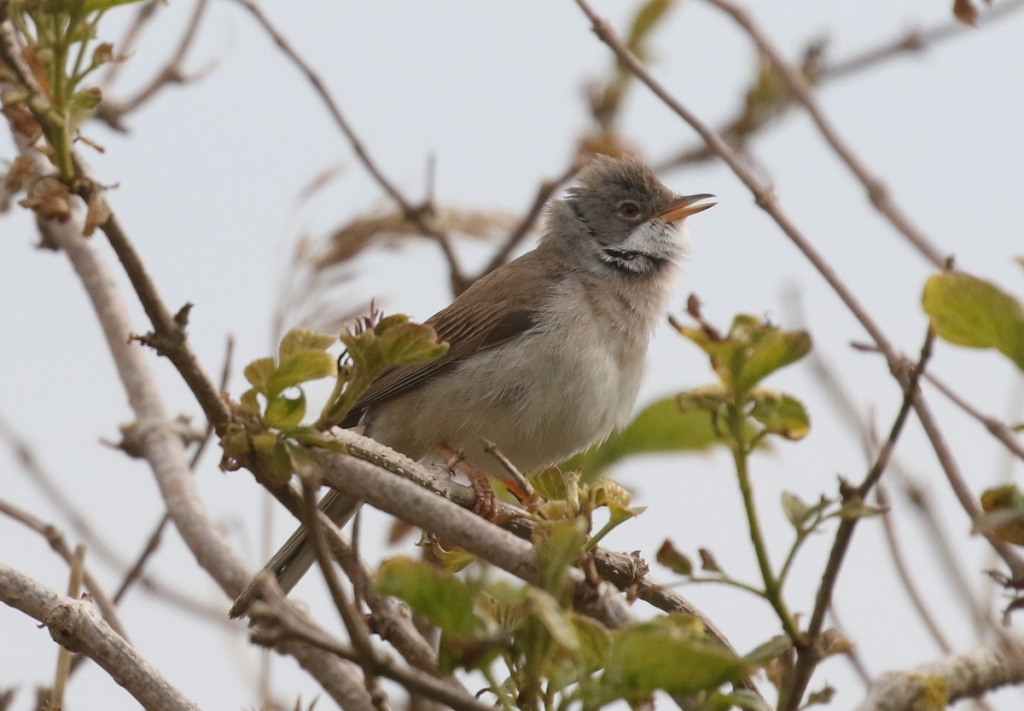
Continuing on up onto the East Bank, we could see at least two families of tiny Lapwing chicks still on the grazing marshes. There were Redshanks displaying too, and several Avocets at the back on Pope’s Pool.
We heard our first Yellow Wagtails calling and looked over to see at least five around the feet of the cows, including a couple of smart canary yellow males. They were very mobile, flying round a couple of times, before they were off, carrying on west. But all the time there were more dropping in – it was to be a real theme of the morning, with lots of Yellow Wagtails on the move.
It was breezier today and the ducks were tucked down in the grass. We could still see several Teal, Shoveler, Gadwall and Shelduck, but it took a bit more scanning to find one or two drake Wigeon too.
Being a bit windier, it didn’t feel like a day for Bearded Tits, which was one species on the wish list. But when we heard one calling, we looked down to see a smart male climbing up the reeds on the far side of the ditch just below the path. It perched out in the open for a few seconds on the outside edge of the reeds, giving us a very good view of its powder grey head and black moustache (not really a beard!), before it flew back along the ditch. A second bird, a female was calling nearby too, and flew past after it. The two of them disappeared deeper in to the reeds. We got good views of several Sedge Warblers along here too.
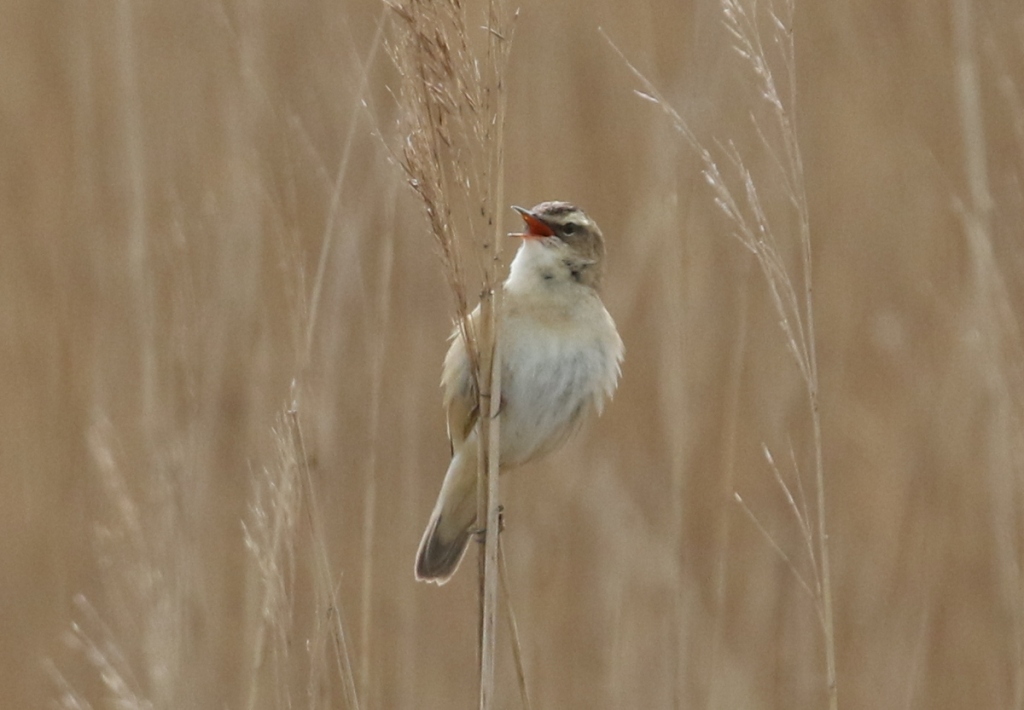
A pair of Mediterranean Gulls circled over calling and two Sandwich Terns flew west over the brackish pools. There had apparently been a Curlew Sandpiper with the Dunlin on Arnold’s Marsh earlier. Some of the Dunlin were now asleep in the vegetation on one of the islands on the brackish pool, but looking through we could see it was not with them. Dunlin numbers were down compared to yesterday, so some had probably gone off elsewhere. A small flock of Knot flew in and landed on the edge of the island. Mostly in grey non-breeding plumage, one was just starting to get patchy orange-red underparts. The two drake Pintail were still out on the water, upending.
Turning our attention to Arnold’s Marsh now, we could see only three Dunlin on here now. There were also three Bar-tailed Godwits, and several Ringed Plover. As we started to make our way back, a Whimbrel flew west behind us.
Two more Yellow Wagtails had dropped in with cows, and we heard more calling overhead. A Little Grebe was now on Don’s Pool, along with a female Common Pochard, both of which will probably breed here.
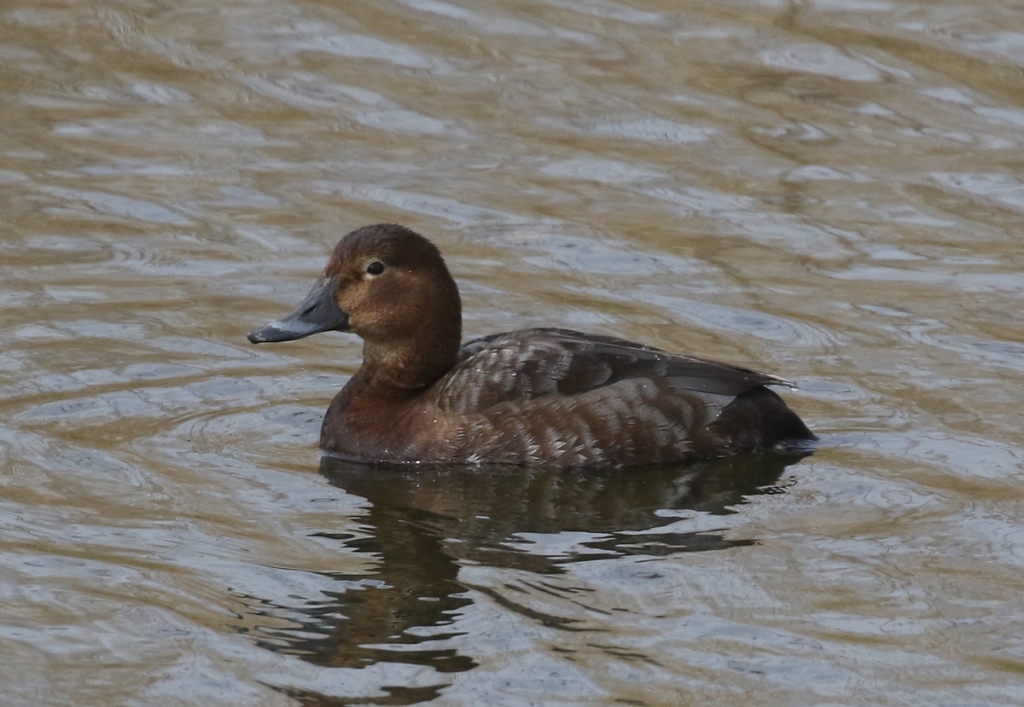
On the walk back along The Skirts, we could see at least one Marsh Harrier again. Several Common Swifts were hawking for insects low over North Scrape. A Greenfinch flew overhead calling.
A Grey-headed Wagtail had dropped in just along the coast at Kelling earlier this morning and had lingered for the last couple of hours. We got a message to stay that it was still there now, so we thought we would go over to try to see it. But as we had seen, the wagtails were very actively on the move this morning, so by the time we got there it was perhaps no surprise that it had finally decided to fly off.
We did see a Blackcap in the lane, and a Chiffchaff was singing down by the copse. There were a couple of Common Whitethroats and lots of Linnets in the bushes around the Water Meadow pool. A quick look at the pool itself produced a Common Sandpiper and a Stock Dove (a species we had only just talked about needing to see!). We decided we would be better to try out luck elsewhere, so we started to walk back. A Lesser Whitethroat was rattling in the bushes in the field nearby, and we could see it moving around in the top of a low hawthorn.
We drove back west inland and stopped just before we got to Wells. We scanned the pools from the parking area – two Brent Geese were out on the grass in front of the pool west of the track. A moulting male Ruff was feeding on the edge of the water, just starting to get part of its barred grey ruff now. Two Little Ringed Plovers were further back.
A short way down the track, we had a better view of one of the Little Ringed Plovers, with its golden eye ring clear now. Then we noticed a small snipe with a distinctive bobbing action in amongst the clumps of rushes close to the track, a Jack Snipe. We had a great view of it as it fed around the base of the rushes, its golden mantle stripes contrasting with its dark upperparts.
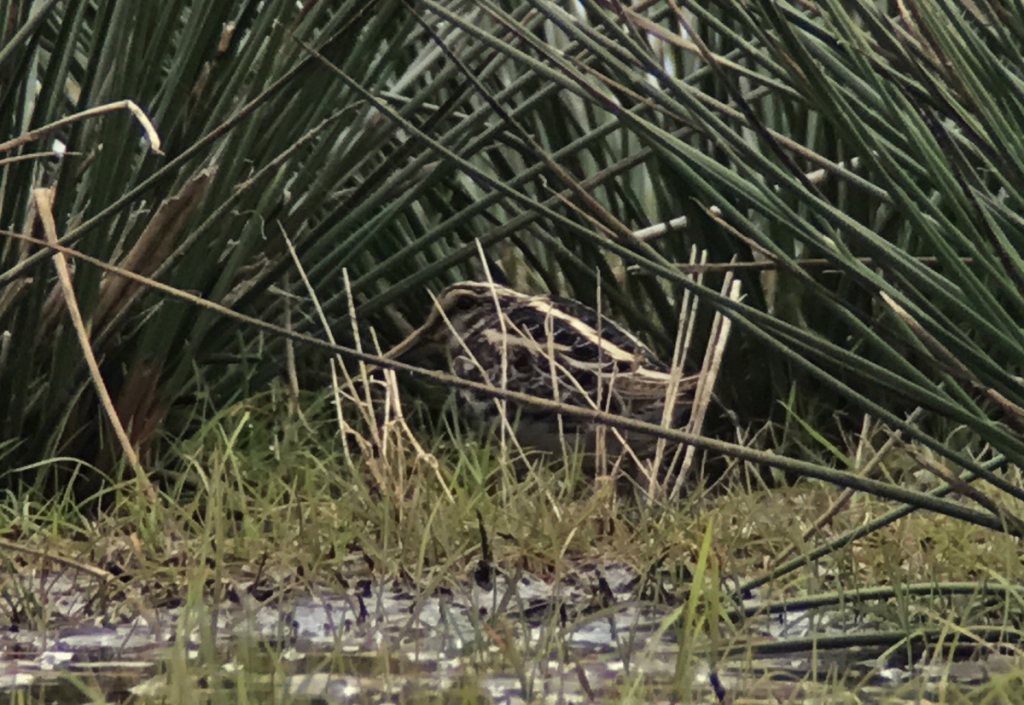
We could see a dark cloud approaching from the west, so we walked back to the minibus for lunch under the shelter of the tailgate, while we waited for the shower to pass over.
Two Grey Partridges were in the field opposite. A lone Egyptian Goose was over the back with the Greylags but walked up to the front on its own. Two Common Swifts flew in low over the east pool and right over us, disappearing on west into the drizzle.
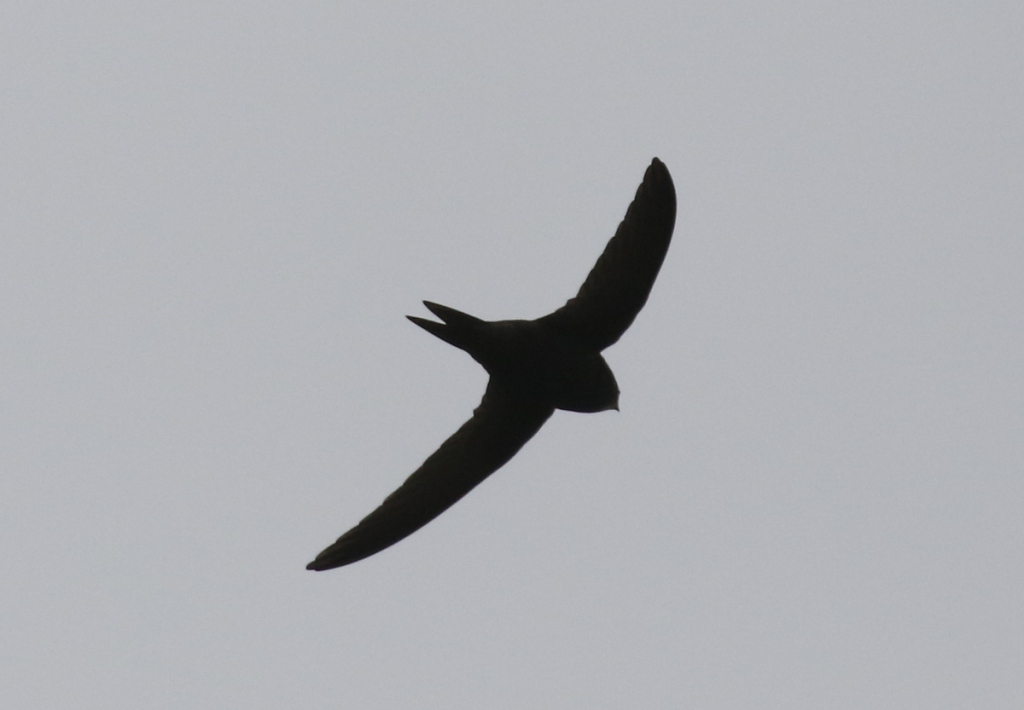
After lunch, once the shower had cleared through, we set off back down the track. There were two Yellow Wagtails now, bright yellow males again in the rushes close to the path just to the east, before they flew out to the islands in the middle.
There were more hirundines now, after the rain, hawking low over the pools, and there were several House Martins with them now. A male Marsh Harrier was hanging in the air over the bushes beyond in the wind, which was starting to pick up.
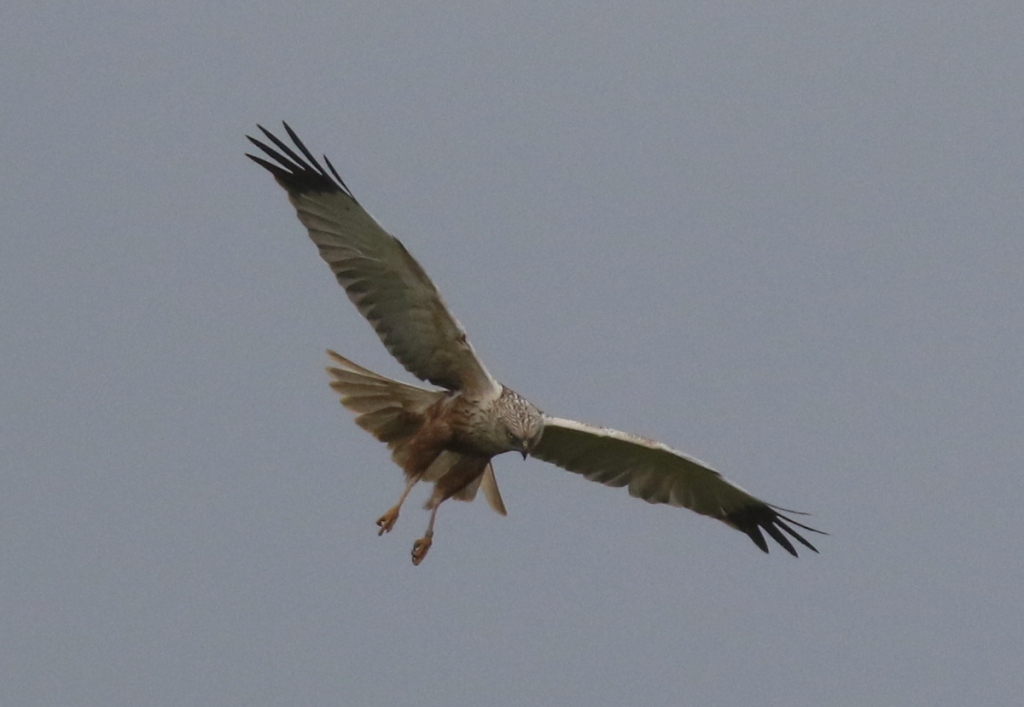
We carried on round to take a look at the western pool. There were lots of Avocets down in the grass and lots of Swallows flying round low over the water, but we couldn’t see anything more interesting. We climbed up onto the seawall for a better look. It was windy up here, but looking out over the saltmarsh towards the harbour we could see a Common Tern patrolling up and down one of the main channels. We carried on up to the corner for a closer look, and could see another three Common Terns further back.
A distant Spoonbill was feeding out on the saltmarsh. One or two Whimbrel were a bit closer, down in the vegetation. Two adult Common Gulls flew past calling. Then a Hobby whipped through overhead, disappearing off into the allotments at Wells, presumably a fresh migrant on its way back for the summer.
We had been lucky with a dry interlude, but we could see more dark clouds approaching so we set off to walk back. The Common Gulls were now on one of the pools, with all the Black-headed Gulls. The two male Yellow Wagtails were back by the track, in the rushes on the other side now, and had been joined by a female.

It started to rain again, so we headed back to the minibus. We hoped we might drive through it, but it still looked rather grey out to the west when we arrived at Burnham Overy. It was only spitting with rain though as we set off down the track, even if it was getting noticeably windier now.
At least 22 Whimbrel were feeding out on the grass from the gate by the stile, with 2 Curlew in with them providing a good comparison, noticeably bigger and longer-billed. There was no sign of any Ring Ouzels now though in the fields either side – presumably they had retreated to the hedges.
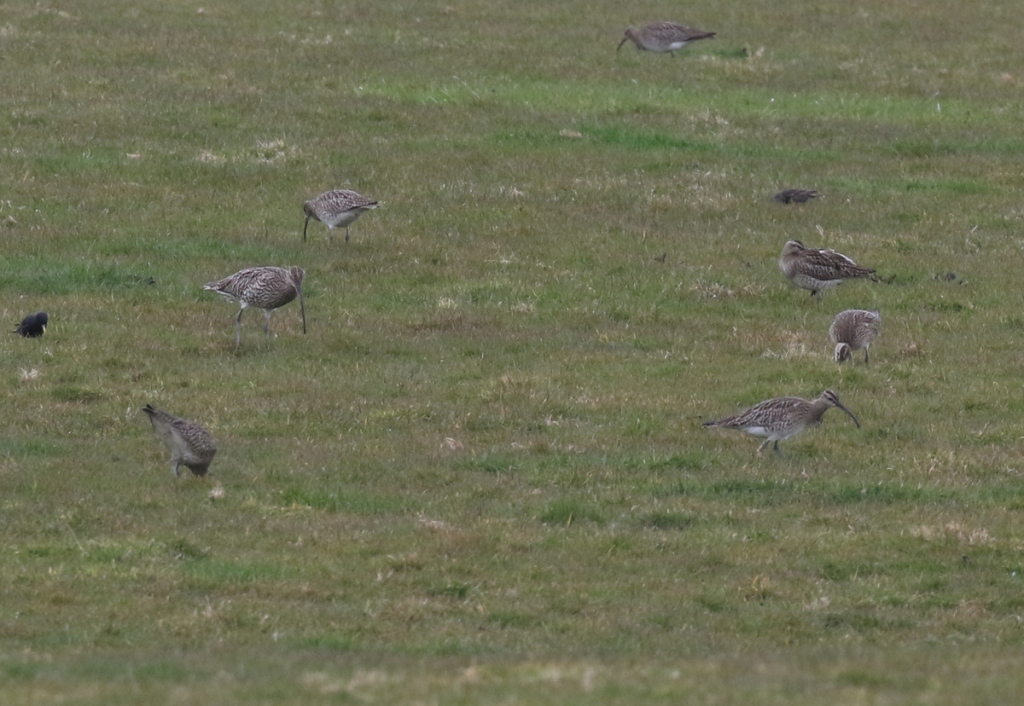
A little further along, we picked up two injured Pink-footed Geese still out on the grazing marsh, unable to fly north for the summer. Several Common Pochard were on the small pools over by the reeds. We carried on along the track to the seawall. The Sedge Warblers along here were unusually quiet due to the deteriorating weather, with just one singing rather half-heartedly.
Up on the seawall, there was an impressive gathering or hundreds of Swallows over the reedbed and pool. Migrants on their way west, they were presumably finding food and would have a place to roost in the reeds.
Looking out across the saltmarsh, we could see a distant Little Tern over the main harbour channel, so we walked down the seawall to the corner for a closer look. There were three Little Terns here now, flying up and down over the water, stopping to hover and then plunging in to the channel. One of them caught a fish, and the three of them chased up high calling.
There were Avocets and Redshanks on the mud, but from the corner we could see two Grey Plovers on the edge of the harbour channel too, one in breeding plumage with black face and belly. One or two Spoonbills were still flying back and forth.
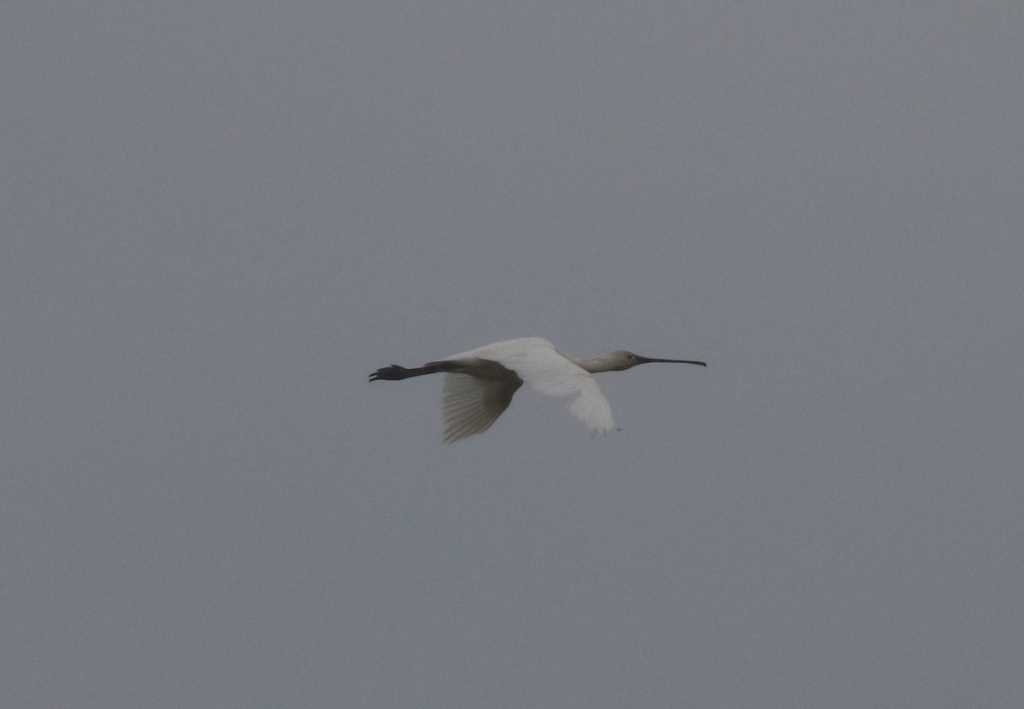
It was cold and windy up here and starting to rain harder now. As we walked back to the track, we could see a Great White Egret flying across beyond the reeds and landing in the distance out on the grazing marsh.
With the deteriorating weather, we decided we would try something that didn’t require walking, rather than finish early. So we drove over to Choseley to look for the Dotterel which had been reported there earlier. We started scanning from the top of the field. We were only part way down when we noticed a flock of Golden Plover flying in and they landed behind us, out of view. A couple of Red legged Partridges were easy to see, but it was a big field with lots of places to hide a lone Dotterel in the rain, lots of dips and dead ground, so it would take quite a bit of time to search the whole field.
We messaged someone we knew who had been here earlier, and they told us where the Dotterel was when they saw it, much further along nearer the far end of the field, so drove down to focus our efforts there. Once we knew exactly where to look, it didn’t take long to find the Dotterel now. It was actively moving round the stony field, running a short distance then stopping, extremely hard to see when it stopped still.

Dotterel are just passage migrants through here, stopping off in traditional fields on their way north each spring, between their wintering grounds in North Africa and Scandinavia where they will breed. Having enjoyed good views of the Dotterel, we drove back up to the top of the field for a quick look at the flock of Golden Plover, several resplendent now in breeding plumage with black faces and bellies (rather like their grey-spangled cousin we had seen at Burnham Overy earlier).
The Dotterel was a great way to wrap up a successful day’s spring birding, so we headed for home happy.
















